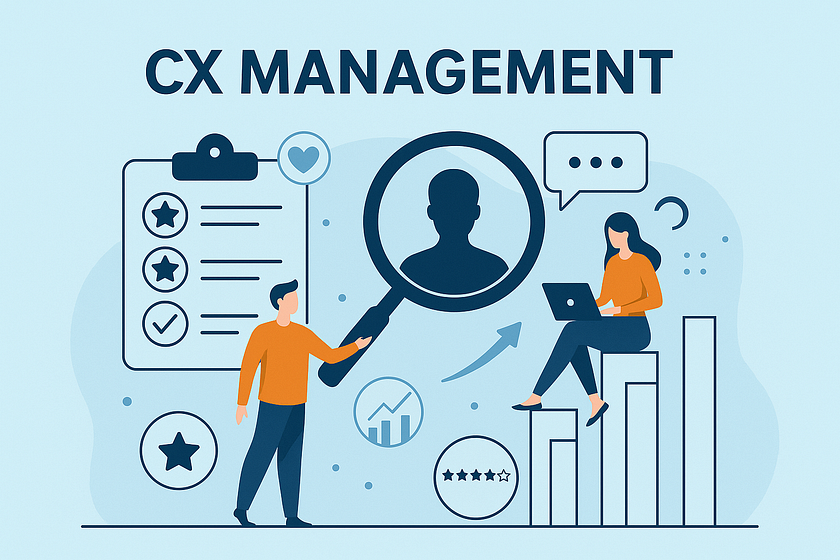Mastering CX Management: The Key to Lasting Customer Loyalty

In today’s competitive business environment, delivering a great product or service is not enough. Companies must also deliver exceptional customer experience (CX) to thrive. That’s where Customer Experience Management (CXM or CEM) comes in — a strategic approach to tracking, analyzing, and improving all customer interactions with a brand. When done right, CX management helps organizations increase customer satisfaction, retention, and lifetime value.
What Is CX Management?
Customer Experience Management refers to the strategies and technologies businesses use to manage a customer’s overall experience with their brand. This includes every touchpoint — from the first website visit to post-sale support. The goal is to provide a seamless, positive, and consistent experience throughout the customer journey.
Unlike traditional customer service, which is reactive and focused on solving issues, CX management is proactive. It anticipates customer needs, streamlines journeys, and builds emotional connections.
Why CX Management Matters
Modern consumers are empowered and informed. With so many options available, they are more likely to stay loyal to brands that make them feel valued and understood. According to research, 86% of customers are willing to pay more for a better experience. This highlights the growing importance of customer experience as a differentiating factor.
Poor customer experience can cost businesses heavily — lost customers, negative reviews, and declining brand reputation. On the other hand, a well-managed CX strategy leads to:
- Increased customer loyalty
- Higher conversion rates
- Stronger brand advocacy
- Greater competitive advantage
Key Elements of Effective CX Management
1. Customer Journey Mapping
Understanding how customers interact with your brand across various touchpoints is the foundation of CX management. Customer journey maps visually represent each step a customer takes — from awareness to purchase and beyond. This helps businesses identify pain points, drop-off zones, and opportunities for improvement.
2. Omnichannel Engagement
Today’s customers interact with brands through multiple channels — websites, social media, mobile apps, physical stores, and more. CX management ensures that the experience across these channels is consistent and integrated. For instance, a customer starting a conversation on Instagram should be able to continue it seamlessly via email or live chat.
3. Personalization
Personalization is no longer optional — it’s expected. By leveraging customer data, brands can deliver tailored recommendations, offers, and content that resonate with individual preferences. This deepens engagement and makes customers feel seen and valued.
4. Feedback Collection and Analysis
Customer feedback — through surveys, reviews, or Net Promoter Scores (NPS) — is gold. CX management tools gather this data and turn it into actionable insights. Analyzing feedback allows companies to detect patterns, uncover unmet needs, and adjust strategies accordingly.
5. Employee Engagement
Engaged employees create better experiences. Companies that invest in training, internal communication, and employee well-being often see a direct impact on customer satisfaction. Frontline teams, in particular, play a crucial role in delivering great CX.
6. Data-Driven Decision Making
CX management relies heavily on analytics. From behavior tracking to sentiment analysis, data allows companies to make informed decisions. By measuring key metrics like Customer Satisfaction (CSAT), Customer Effort Score (CES), and NPS, businesses can continuously refine their CX strategies.
Tools and Technologies Supporting CX Management
The rise of digital transformation has given companies access to advanced tools for CXM:
- Customer Relationship Management (CRM) systems like Salesforce or HubSpot
- Customer Data Platforms (CDP) that unify data across departments
- AI-powered chatbots for instant support
- Voice of the Customer (VoC) platforms for feedback collection
- Journey orchestration platforms that automate cross-channel engagement
These tools not only improve efficiency but also enable real-time personalization and problem resolution.
Challenges in CX Management
While the benefits are significant, CX management comes with its share of challenges:
- Siloed data: When customer information is fragmented across departments, it hampers a unified experience.
- Inconsistent brand messaging: If marketing, sales, and support don’t align, it creates confusion.
- Overdependence on automation: While automation enhances speed, too much of it can make interactions feel impersonal.
- Lack of leadership buy-in: Without top-level support, CX initiatives may not receive the resources or attention they need.
Overcoming these challenges requires a strategic mindset, cross-functional collaboration, and a culture centered on customer obsession.
Future Trends in CX Management
CX is constantly evolving. Here are a few trends shaping its future:
- Hyper-personalization using AI and machine learning
- Real-time analytics for predictive insights
- Voice and visual search integration
- Sustainability-driven experiences (e.g., eco-friendly packaging, carbon-neutral shipping)
- Emotion analytics to gauge customer sentiment through facial expressions, voice tone, or written language
Businesses that stay ahead of these trends are more likely to build lasting customer relationships.
Final Thoughts
CX management is no longer a luxury — it’s a necessity. In a world where customers remember experiences more than products, delivering consistent, personalized, and delightful interactions can define your brand’s success.
Companies that invest in understanding their customers, aligning internal teams, and leveraging smart technologies will not only satisfy but also wow their customers. And that’s how brand loyalty is built — not through transactions, but through experiences.


Comments
Post a Comment